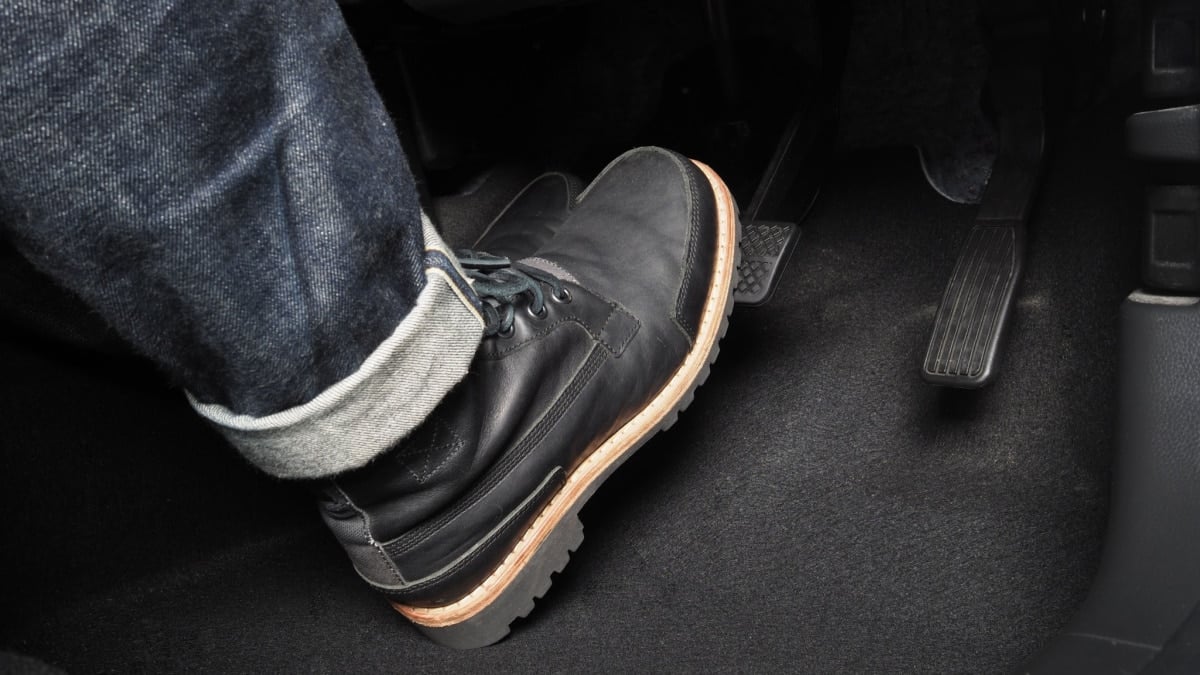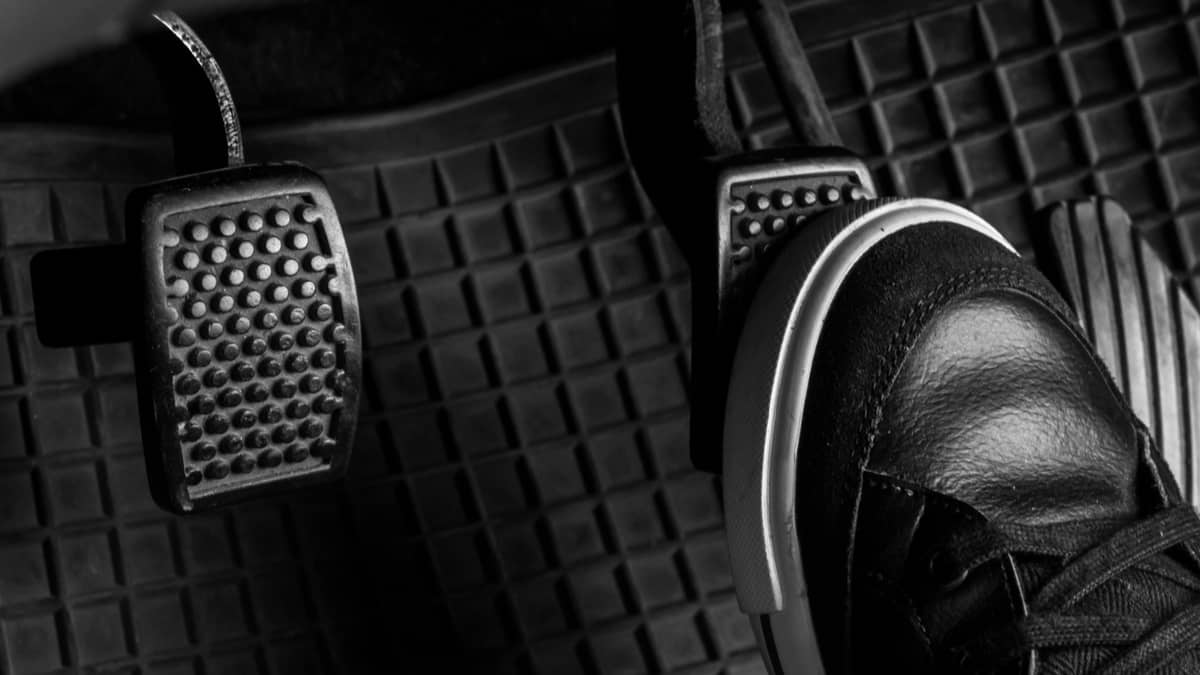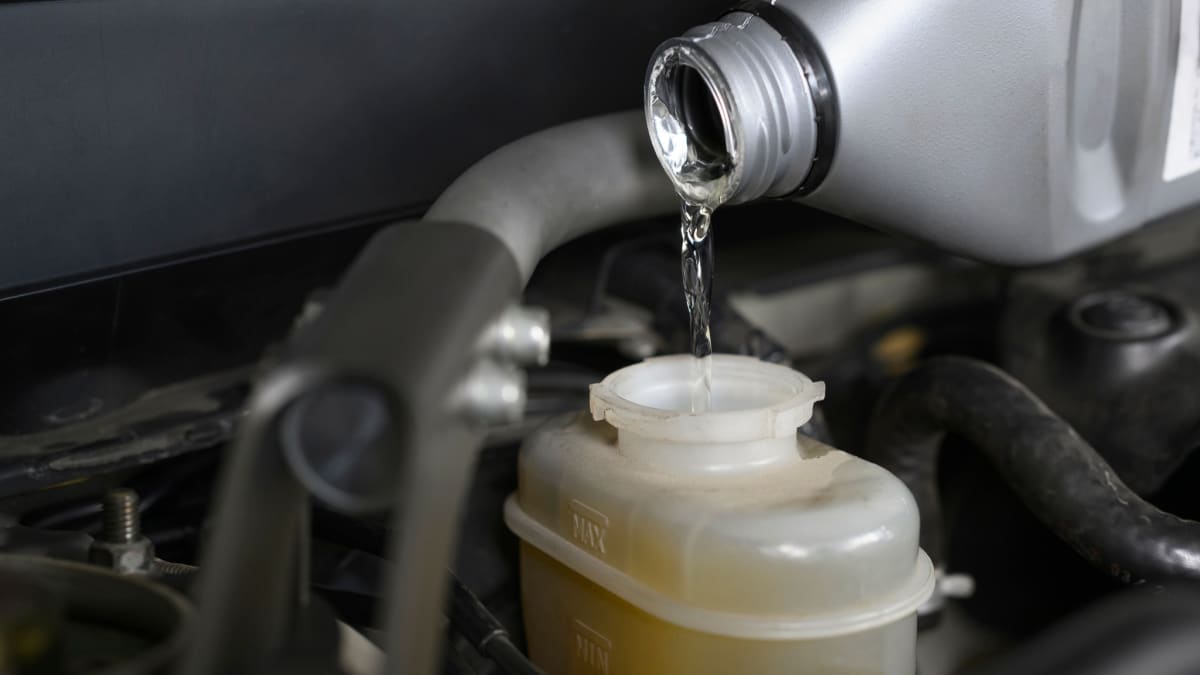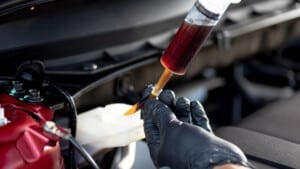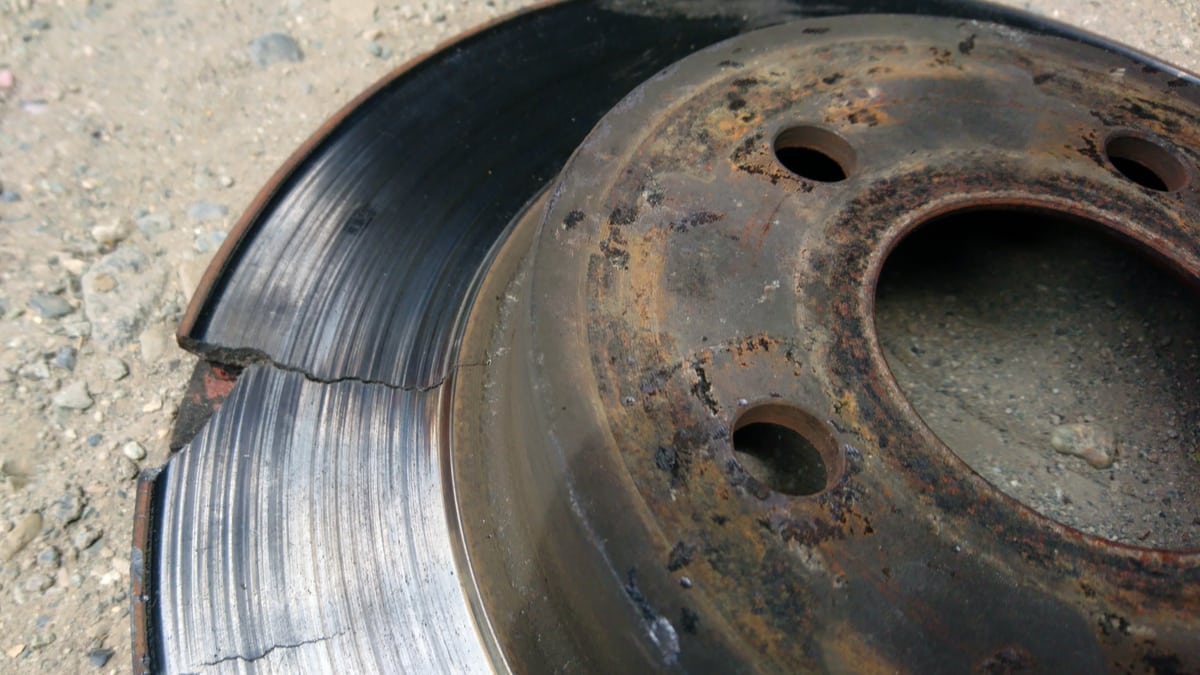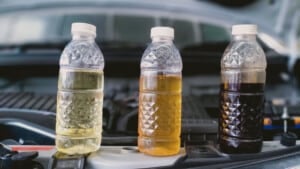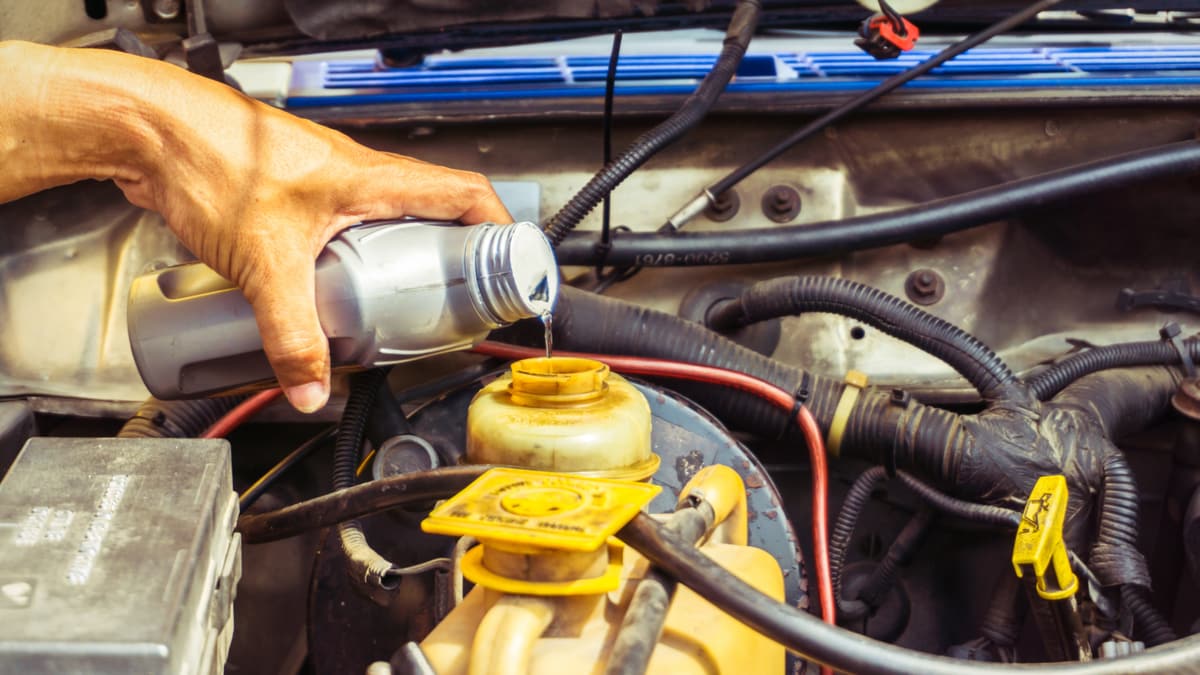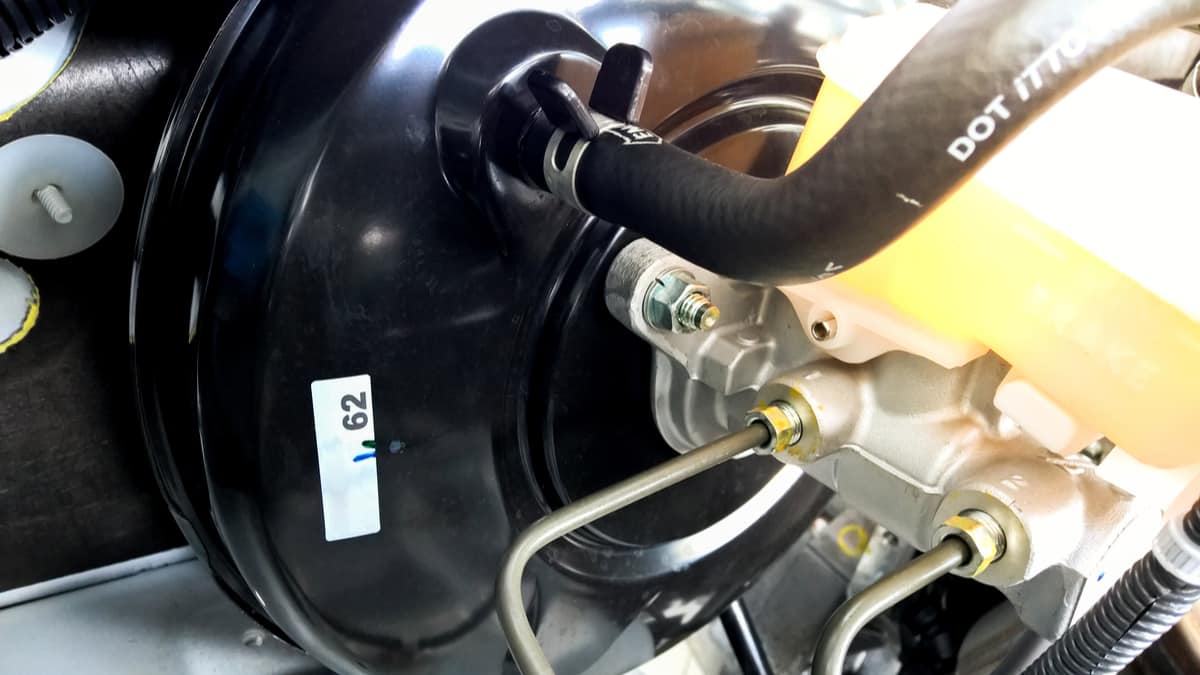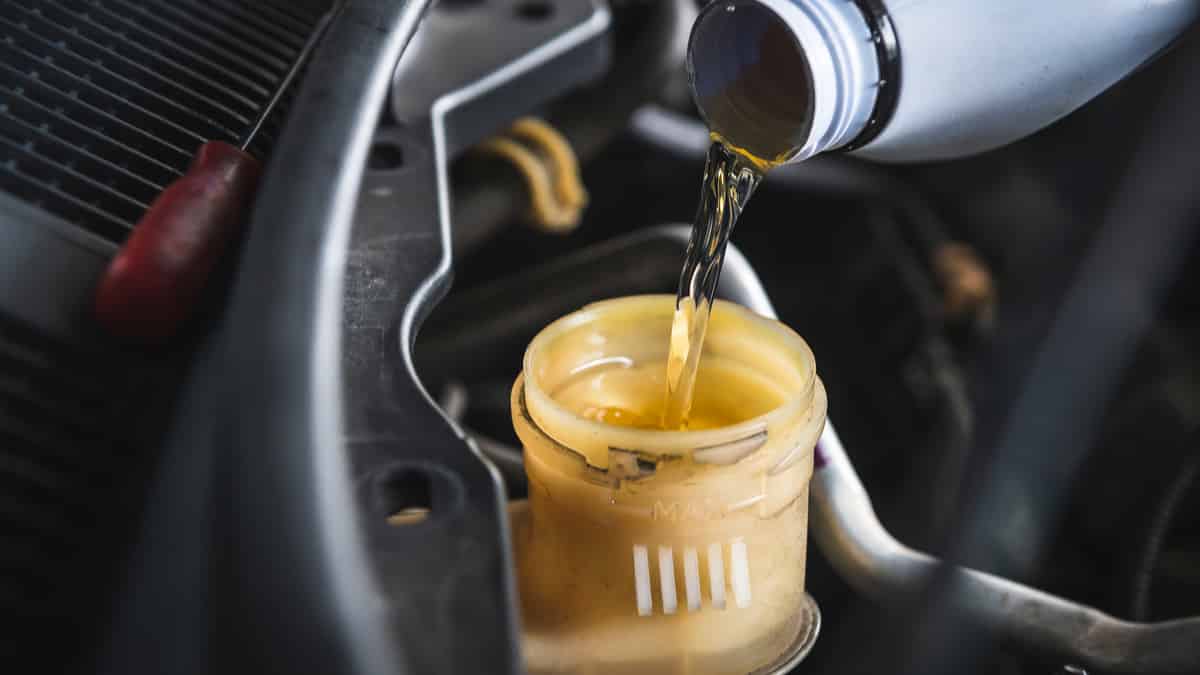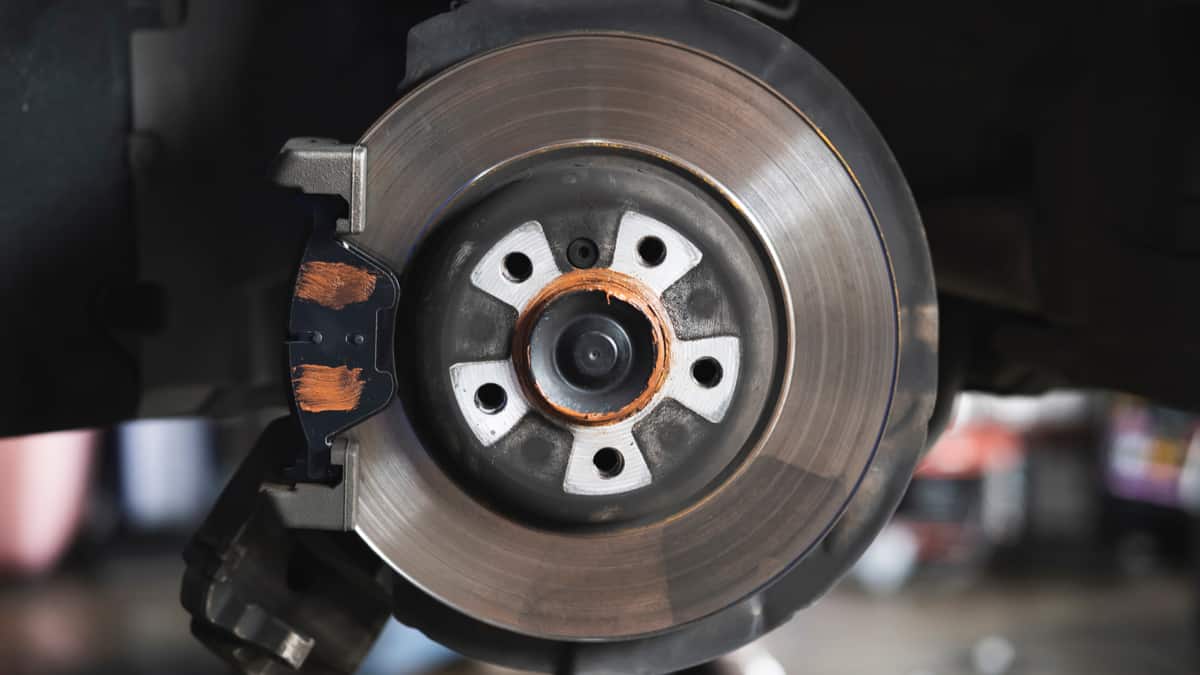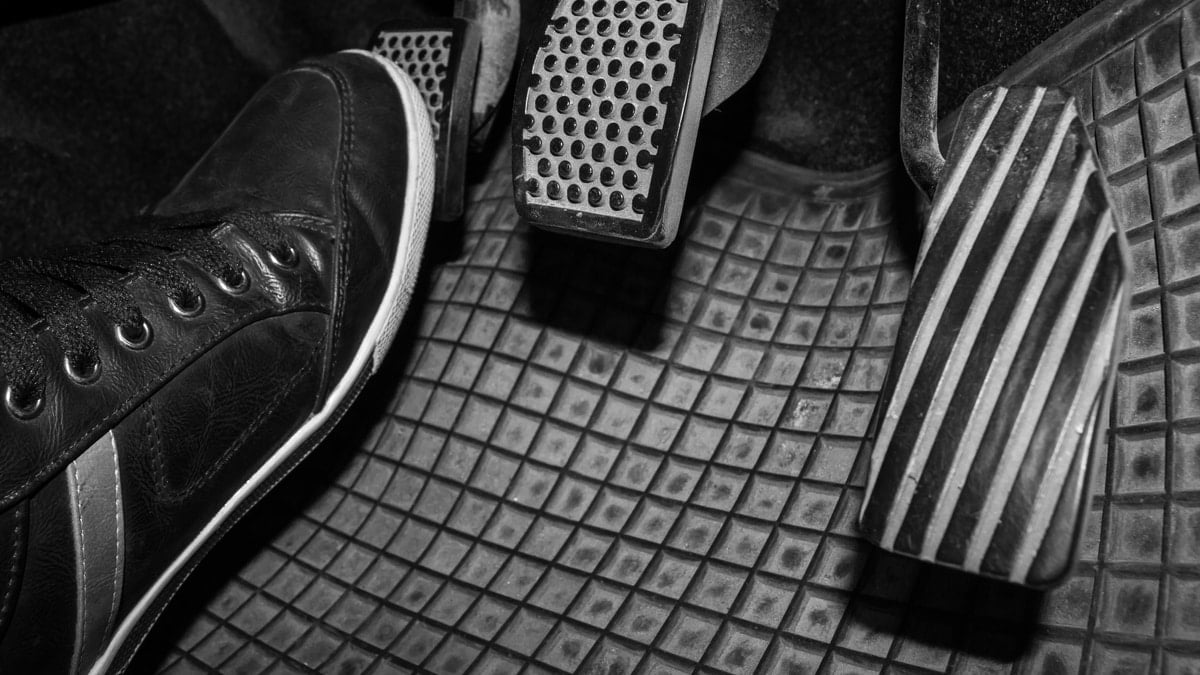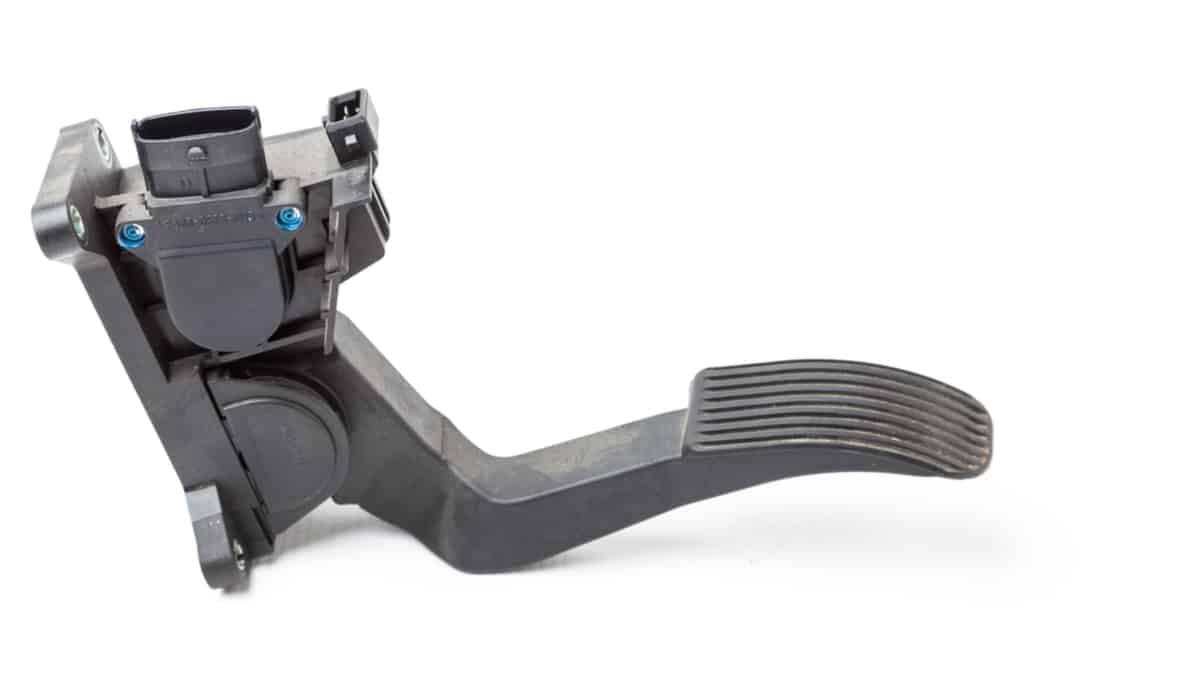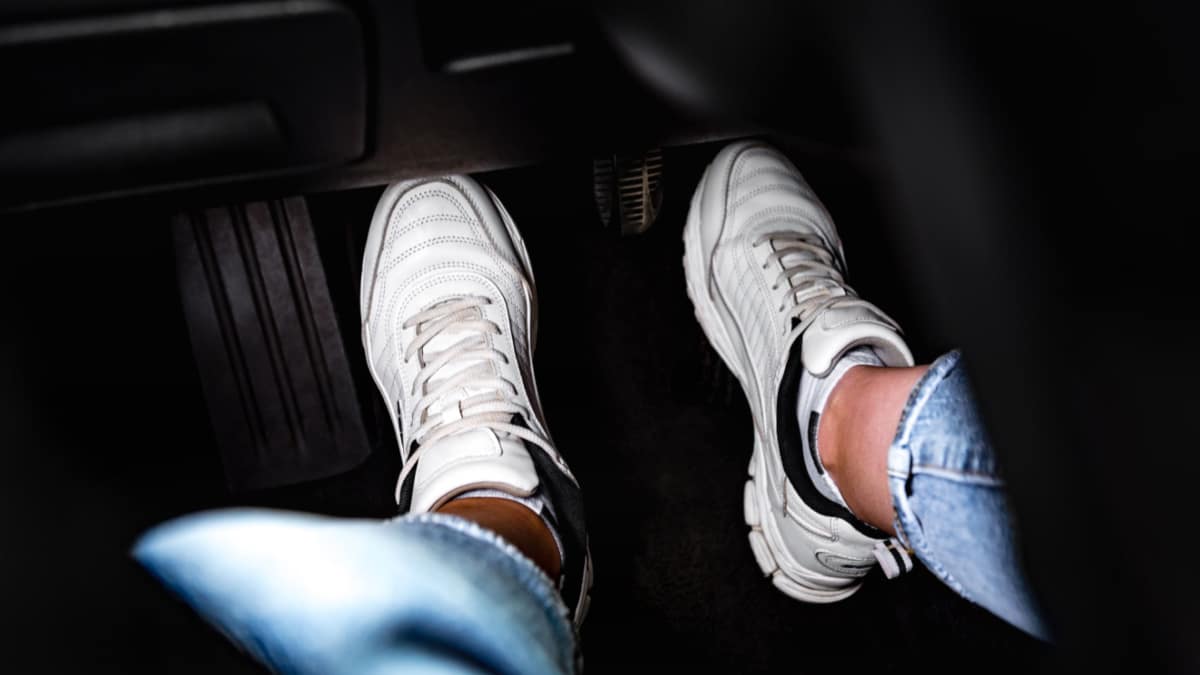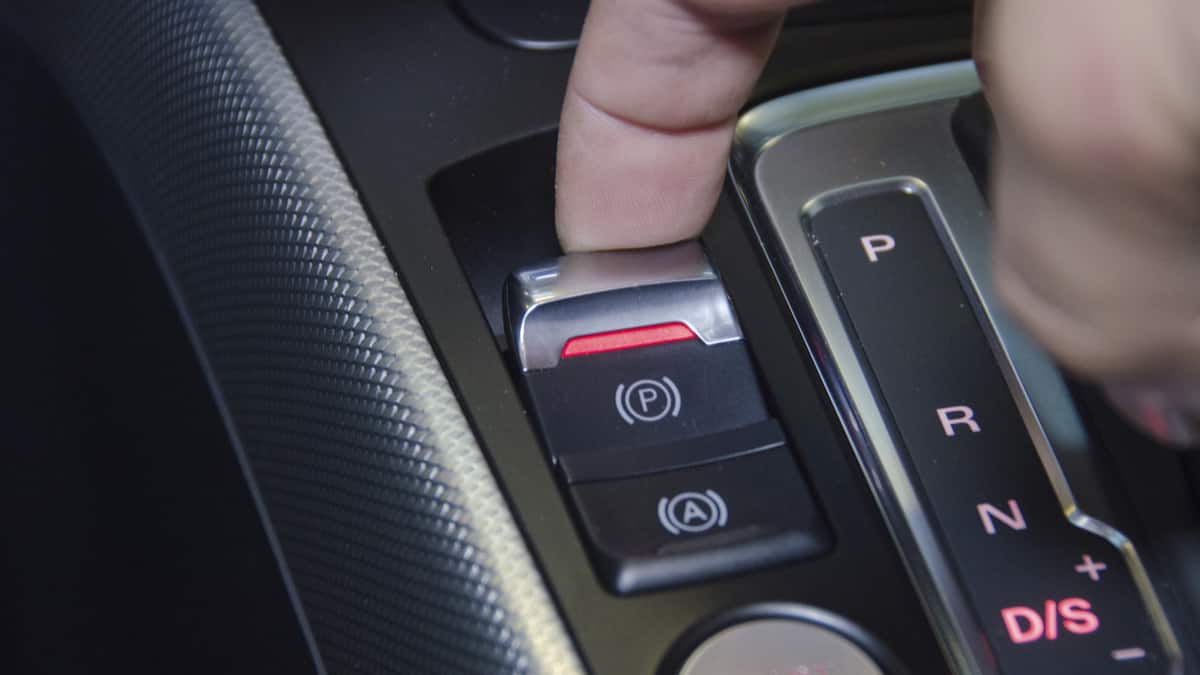Your car’s brakes are one system that is meant to ensure you remain accident-free. If the brakes aren’t working as they should, you are at risk of not stopping in time. For this reason, it should be alarming when you have a spongy brake pedal. You don’t ever want to mess around with a soft or spongy brake pedal.
In this guide, we cover how the spongy brake pedal feels and show you what might cause it. We also look at the differences between a soft and spongy brake pedal, plus give you directions that help you fix it. Before you leave, you will also gain some answers to your top brake pedal questions.
Causes of Spongy or Soft Brake Pedal
A spongy brake pedal occurs when there’s air in the lines or a line is broken. The problem could also occur if the brake shoes need adjustment. Otherwise, a mechanical failure might have occurred, such as worn calipers, a bad master cylinder, failing wheel cylinders or a malfunction with the ABS Hydraulic assembly.
Here is more detailed information on the most common causes of a spongy or soft brake pedal:
1. Air in Brake Lines
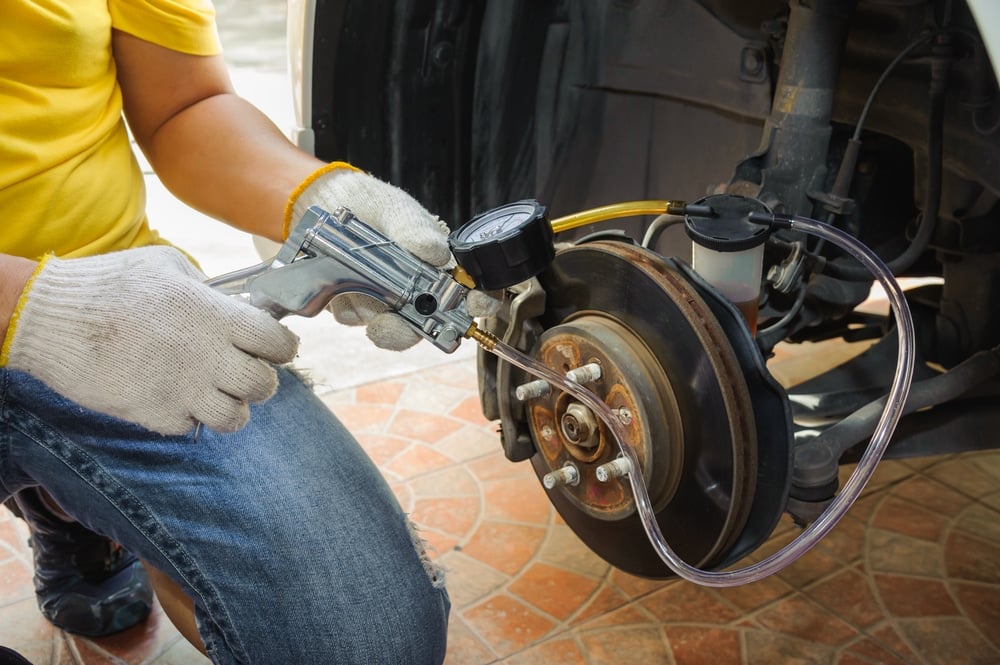
The brake system should remain closed, meaning no air should get inside. However, air can get trapped in the brake lines, especially after service. This problem causes a spongy pedal and it keeps the fluid from circulating as it should.
If the fluid hasn’t been changed, now might be a good time to do that. If service was just performed, you might need to bleed and flush the brake system to get rid of the air. Ensuring the system has clean fluid is important to keeping all of the parts lubricated and the brakes responding as they should.
2. Broken Brake Lines
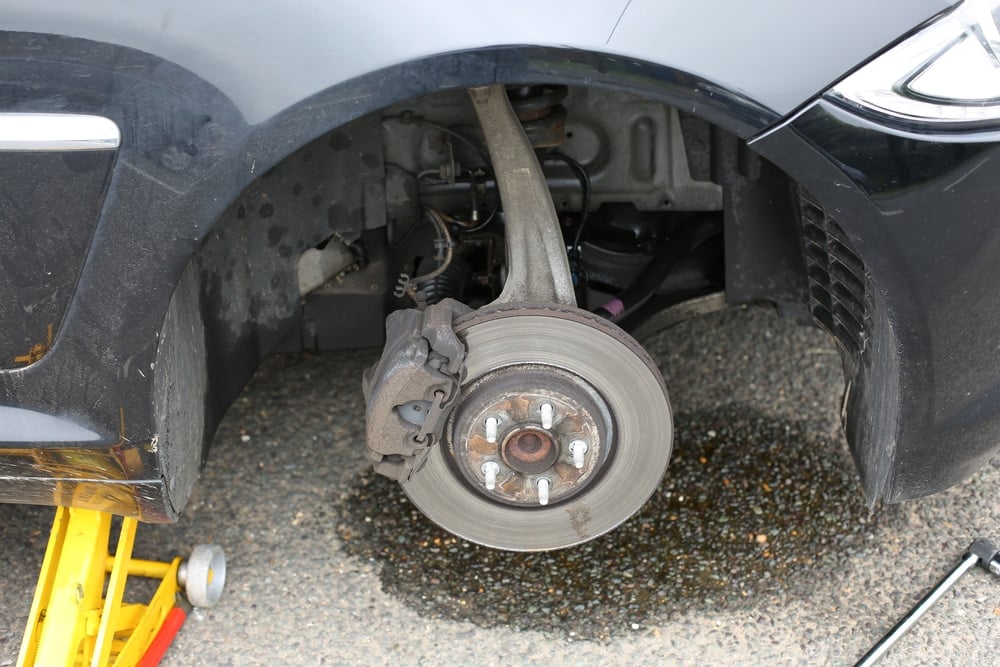
One reason air might have gotten into the system is because of a damaged line. Brake lines are constructed from steel tubing that are susceptible to wear and rust.
If the rust or corrosion leads to a small hole forming, brake fluid will start to leak out. As fluid leaks out and air infiltrates the system, hydraulic pressure is lost, leading to a spongy pedal.
3. Brake Shoes Need Adjustment
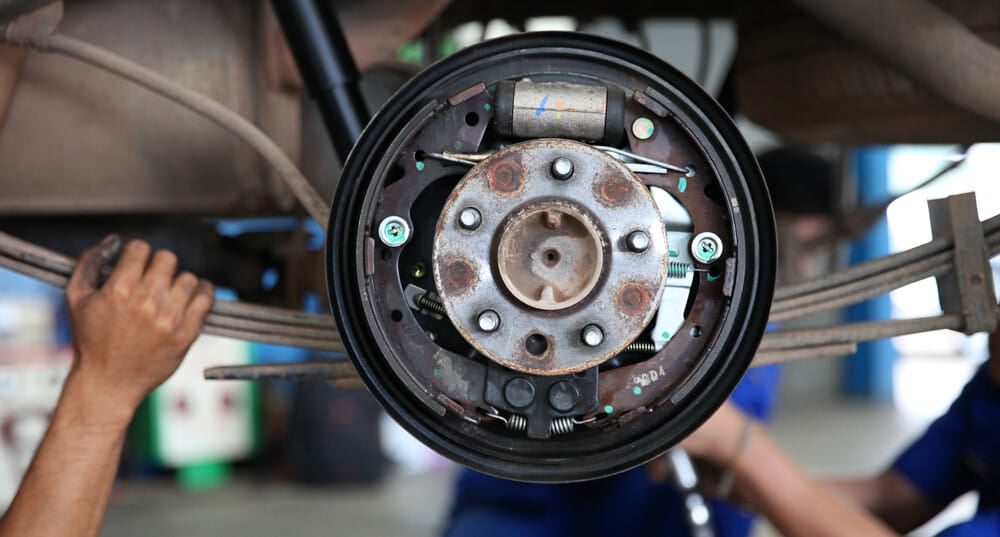
If your vehicle contains brake drums and shoes, you may need to adjust them. As they wear, it’s normal for some adjustments to be needed, which is why you want to stay on top of maintenance.
You should also apply the parking brake occasionally. This simple step helps to keep the rear brake shoes engaged and adjusted.
RELATED: 4 Symptoms of Bad or Worn Brake Shoes
4. Worn Calipers
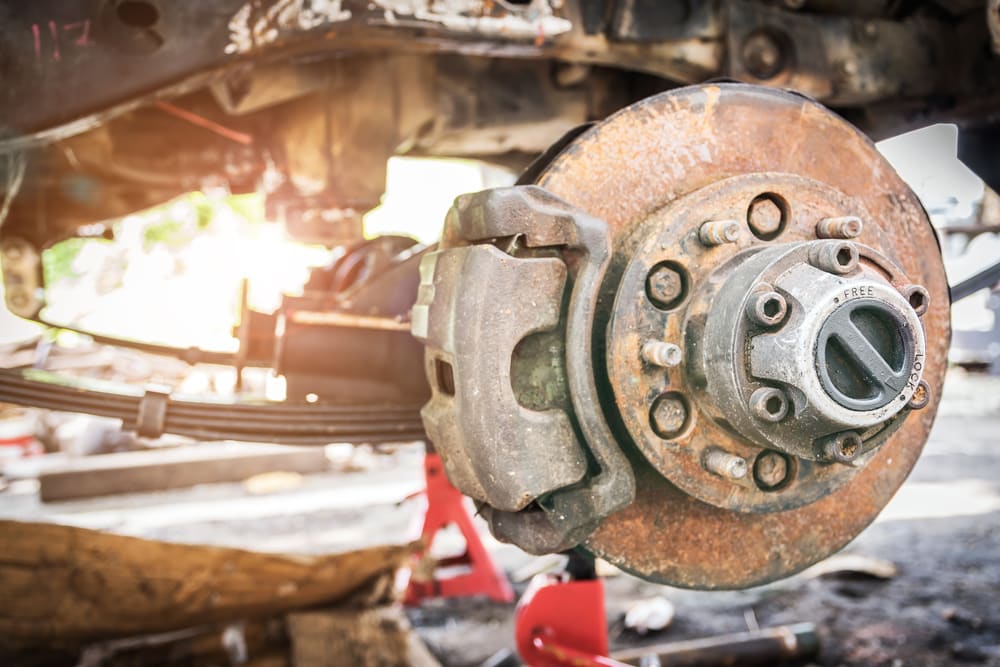
Brake calipers are the component meant to clamp the pads against the rotors on the disc system. Over time, they can become corroded. When rust occurs on the internal piston seal, leaking can occur.
If the brake caliper is leaking, the pedal can become spongy and even go to the floor. You don’t always need to change the caliper if the seal can be replaced and resolve the issue.
5. Bad Master Cylinder
The master cylinder is a major component of the brake system. It’s needed to hold brake fluid and generate enough hydraulic pressure to feed the brakes. However, this part can also wear down and cause leaks over time.
The master cylinder deals with two types of leaks. You could have an external or internal leak, which is usually caused by a bad piston seal. Either way, there will be a loss of hydraulic pressure that causes the spongy brake pedal.
RELATED: 5 Signs of a Bad Brake Master Cylinder
6. Failing Wheel Cylinders
If you have a drum brake configuration, the drum is going to rotate against the wheel. In the drum, there are brake shoes that push into the drum with the help of wheel cylinder pistons.
Hydraulic pressure is needed to move the shoes into the drum so the wheels slow down. However, wheel cylinder corrosion can lead to leaking fluid that reduces the pressure. What you are left with is a soft brake pedal.
7. Malfunctioning ABS Hydraulic Assembly
If your vehicle is equipped with ABS, it also has an hydraulic assembly that’s known as the ABS modulator. Within this assembly, there are multiple valves and solenoids that can fail.
If an internal failure occurs in the ABS control module, the valves may not open correctly, which would cause a spongy pedal. Plus, it could cause issues with the ABS.
Spongy vs. Soft Brake Pedal
The terms spongy and soft brake pedal is commonly interchanged with one another. While this will work, the terms do have slightly different meanings.
Spongy brakes feel like you are pushing into a spring when you get toward the floor. On the other hand, your soft brake is going to go all the way to the floor or push beyond where it should without too much pressure. Either way, the same causes lead to both problems.
How to Fix a Soft Brake Pedal
To fix a soft or spongy brake pedal, you need to look for any brake fluid leaks and fix them if you find a problem. You also want to bleed the brake system and make sure the brake shoes are properly adjusted. Then you need to inspect parts like the brake master cylinder and other brake parts.
1. Diagnose System
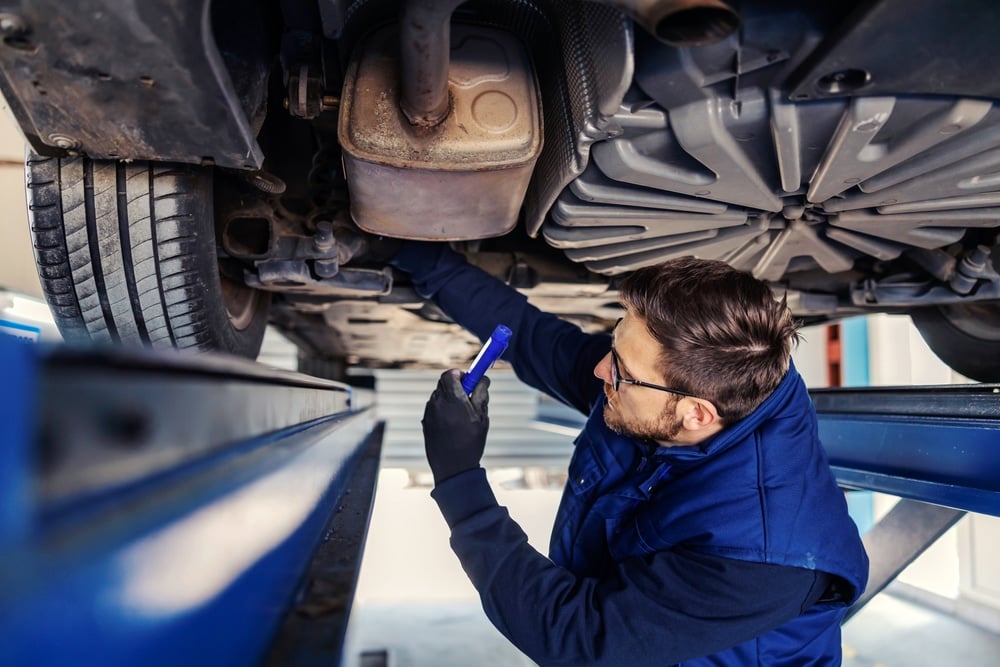
To determine the best fix, you must first figure out what’s wrong. If there is air in the system, you need to move on to step two and look for brake fluid leaks. Even minor leaks can cause the brake pedal to get soft or spongy, so it’s important that it’s 100% sealed.
Otherwise, faulty parts need to be replaced to fix the problem. If you don’t feel equipped to handle the diagnosis, you should visit a qualified repair shop instead.
2. Bleed Brakes
If your diagnosis leads you to believe that the brakes need to be bled, the process isn’t that difficult. Here are some general steps you can follow, as long as the manufacturer doesn’t recommend something else.
- Park the vehicle on a flat surface.
- Lift the car and put it securely on jack stands.
- Uncap the master cylinder and remove the old fluid with the vacuum pump or by using a turkey baster. Don’t completely dry out the master cylinder.
- Put new brake fluid in the master cylinder. Allow the cap to remain loose for airflow.
- Consult the service manual to determine what wheel needs to be bled first. You must work in a particular order, normally starting with the wheel farthest from the master cylinder.
- Find the brake bleeder valve. This small screw is normally on the brake caliper on disc brakes and on the wheel cylinders of the drum brakes.
- Connect your vacuum pump to the bleeder valve so a seal forms.
- Open the valve with a wrench.
- Vacuum pump out the old fluid.
- As the fluid bleeds out of the valve, check the master cylinder to ensure it doesn’t run dry.
- Continue adding new fluid to the master cylinder.
- You can stop when there are no more bubbles and the fluid color becomes clear.
- Close the valve and repeat the steps on the other wheels.
- Once you are finished, you must make sure the master cylinder is full. Reinstall the cap.
- Carefully lower the vehicle back to the ground.
Take your car for a test drive and see if the brakes feel better. They should be firm now, without any of that spongy feeling.
3. Replace Faulty Parts
If the low fluid is due to a leak, you want to replace the appropriate hoses before you fill the system back up. Additionally, any other defective parts should be replaced.
Your diagnostics should have helped you find the problem, whether it’s a bad master cylinder or faulty calipers. If you can handle the repair yourself, follow the procedures laid out in the service manual.
4. Visit Mechanic
If you run into any trouble or you don’t feel equipped to handle it, you should seek help from a professional. While some of these procedures seem simple enough, it’s never wise to take on something you aren’t familiar with.
Your brake system is vital to your on-road safety. For this reason, you should avoid messing with anything you don’t have the experience to do.
Signs the Brake Pedal is Spongy
1. Pedal Sinks
The most obvious sign that the brakes have gotten spongy is when the pedal sinks down further than it should. In a well-running brake system, the pedal should maintain an adequate amount of pressure. You should know where the pedal normally pushes to when you step down on the brakes.
If the pedal starts to sink lower than normal, you know they are getting spongy or soft. You can head off bigger problems by paying attention to this sign right away.
2. Must Pump Brakes
To stop or slow down, you should only need to push the pedal in. If this simple action isn’t helping, you may resort to pumping the brakes in a repetitive motion to get it to respond.
Most often, this indicates a brake fluid leak or a mechanical failure. As the problem gets worse and the pedal becomes spongier, you could lose braking power completely.
3. Brake Warning Light
If you aren’t used to the vehicle or haven’t noticed any issues with the pedal, you might have to rely on the warning system to let you know there’s a problem. Modern cars have built-in warnings on the dashboard to alert you when there’s a failure.
On your dashboard, you could see a brake warning light. However, this doesn’t automatically mean the brake pedal is spongy. It could indicate any trouble with the braking system. Either way, it shouldn’t be ignored.
What Can Cause a Spongy Brake Pedal?
The brake pedal becomes spongy when there’s air in the lines or fluid is leaking. It can also be caused by mechanical failure, either from the calipers, master cylinder, wheel cylinder or ABS components. A complete diagnosis is needed to figure out what should be fixed.
Is It Safe to Drive With Spongy Brakes?
It’s never safe to drive a car that has a spongy brake pedal. You should get the car to a safe location and identify what is causing the problem immediately. If the brakes were to go out completely while you are driving, a major accident could occur.
Why are My Brakes Still Spongy After Bleeding?
It’s possible that you haven’t removed all of the air from the brake system. In this case, you should attempt bleeding the brakes again. Other than that, the problem could be a leak or mechanical failure of one of the other parts.
What are the Symptoms of a Failing Master Cylinder?
When the master cylinder fails, it can’t apply the right amount of hydraulic pressure to the brakes. The pedal starts to feel soft and mushy. It can also sink further than it should as the system begins to leak. The only ways to resolve the situation is to replace the master cylinder or repair the leak.
Can Low Brake Fluid Cause Spongy Brakes?
The brake system must have the right amount of fluid inside to work properly. If the fluid gets low, you will have reduced stopping power when you push down the pedal. It can also feel spongy and soft, leaving you in a dangerous situation if the system fails.
At the first sign of spongy brake pedals, you must jump into action. In most cases, low fluid or a leak is to blame. Either way, you need to fix the problem before you head back on the road to ensure everyone remains safe and protected.
Some common causes of a spongy or soft brake pedal include:
- Air in Brake Lines
- Broken Brake Lines
- Brake Shoes Need Adjustment
- Worn Calipers
- Bad Master Cylinder
- Failing Wheel Cylinders
- Malfunctioning ABS Hydraulic Assembly
If you are not comfortable working on your own vehicle, it is always best to take it to a professional to be checked out.
Learn more:
Categories: Brakes, Troubleshooting
